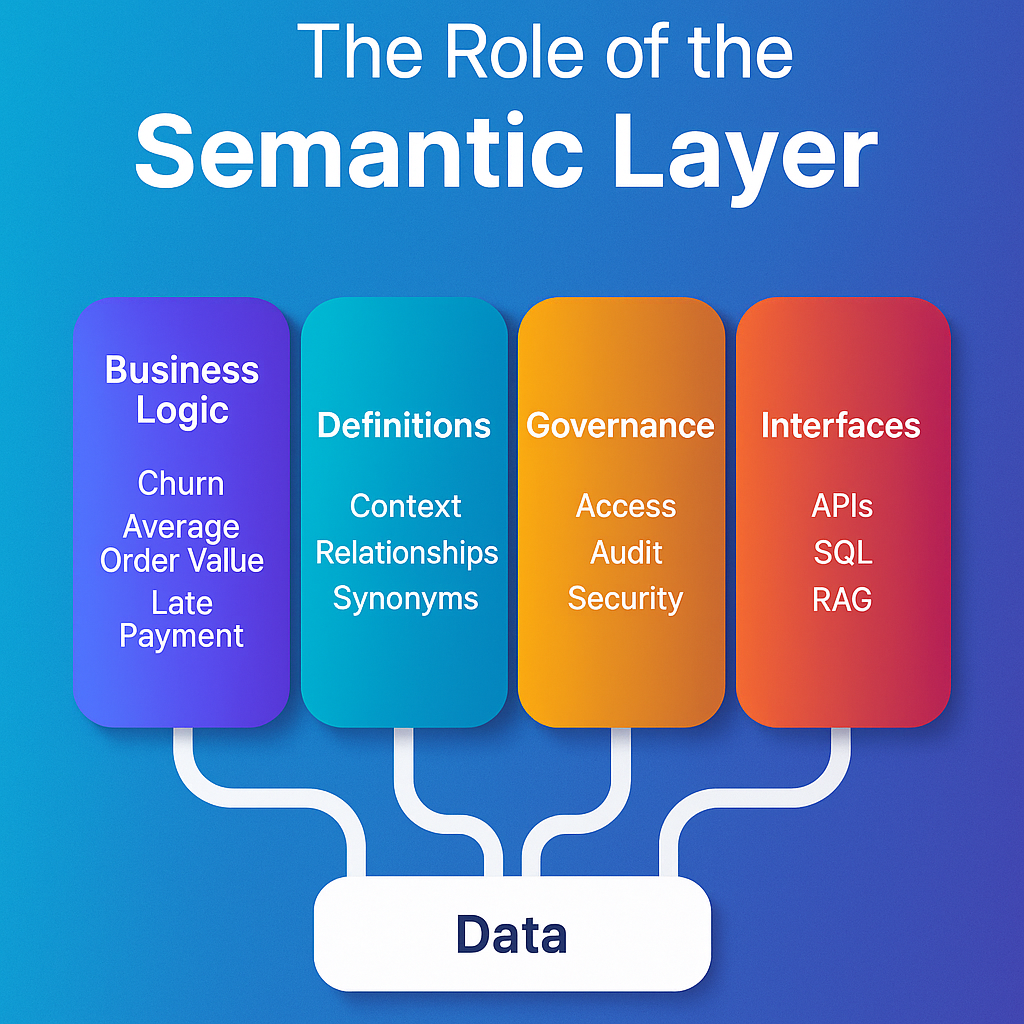
As large language models (LLMs) become integrated into enterprise workflows, the focus has shifted from just building models to making enterprise data ready for them. One of the most critical enablers of this transformation is the semantic layer, a structured, business-friendly abstraction that sits between raw data and applications or models consuming it.
Why Enterprises Need a Semantic Layer for LLMs
Enterprise data is notoriously complex: siloed, inconsistent, and often lacking the contextual clarity LLMs require to generate reliable outputs. LLMs are powerful, but without structured, contextual input, they can hallucinate, misinterpret, or produce irrelevant results. This is where the semantic layer comes in.
The semantic layer translates raw data into consistent business definitions and relationships. It provides a common language for data, “customer,” “order,” “churn”, and aligns data structures with business logic. When LLMs interact with enterprise systems via retrieval-augmented generation (RAG), APIs, or internal agents, this layer ensures the data they receive is coherent, meaningful, and safe to use.
Key Benefits
- Improved Accuracy:
LLMs rely on relevant, contextual input. A semantic layer curates the right data, with the right definitions, ensuring outputs are accurate and aligned with business expectations. - Governance & Trust:
The semantic layer enforces standard definitions and access controls, ensuring that data consumed by AI systems meets compliance and governance standards. - Business Self-Service:
With a semantic layer, non-technical teams can query or prompt systems in natural language while still retrieving structured, precise insights, without relying on IT or analysts. - Data Consistency Across Tools:
Whether it’s BI dashboards, customer-facing chatbots, or internal AI copilots, the semantic layer ensures that all tools speak the same “data language.” - Foundation for RAG Pipelines:
Retrieval-augmented generation depends on well-structured, retrievable data chunks. The semantic layer enables better chunking, indexing, and context-mapping across unstructured and structured data.
Semantic Layer in Action
Imagine an LLM integrated into an enterprise customer support platform. A user might prompt, “Show me high-value customers at risk of churning.” Without a semantic layer, the model may misunderstand “high-value” or “churn” depending on inconsistent data usage across teams. With a semantic layer, those terms are pre-defined with filters, thresholds, and logic that the LLM can pull directly, yielding far more accurate and consistent results.
What’s Next?
Modern data platforms are increasingly embedding semantic layers into their core offerings (e.g., dbt Semantic Layer, Cube, AtScale). As LLMs become standard tools in enterprise settings, from copilots to analytics assistants, the semantic layer will be vital to ensure the outputs are trustworthy, relevant, and business-aligned.
In short, as enterprises move from experimentation to production-grade LLM deployments, the semantic layer isn’t just helpful, it’s essential.

Leave a Reply